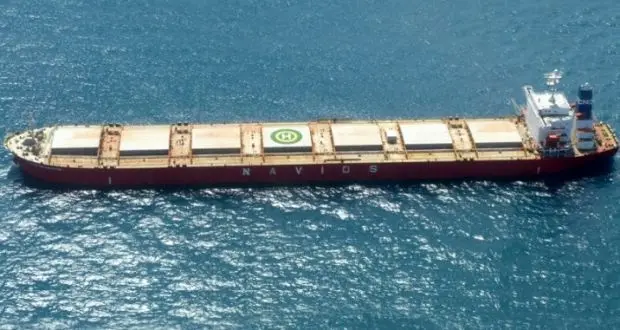Bridge team communication secures safe navigation

The Australian Transport Safety Bureau (ATSB) issued an investigation report, describing how the Malta-flagged bulk carrier “Navios Northern Star” contacted a buoy in Torres Strait, Australia, on March 2016, while approaching the course alteration position, and providing important safety issues to prevent similar incidents in the future.
The incident
On 15 March, shortly after 2300, Navios Northern Star was transiting the Prince of Wales Channel, Torres Strait, on an easterly heading towards the waypoint north of OG Rock. The coastal pilot’s cue for altering course for the waypoint was to use a radar range from Alert Patches buoy. Shortly after 2314, the pilot ordered starboard rudder for the course alteration.
At about 2316, with the buoy directly ahead, the ship’s master asked the pilot if they were going to collide with it. The pilot then ordered progressive starboard rudder movements in quick succession. At 2317, as the ship was swinging to starboard, the ship’s port quarter contacted the Alert Patches buoy. Damage to the buoy and ship was limited to paintwork.
Probable causes
- The ATSB investigation found Navios Northern Star’s planned course alteration to pass Alert Patches buoy was not made in time nor was the alteration properly executed and monitored to avoid contacting the buoy.
- As the ship was approaching the course alteration position, the pilot became focused on trying to regain the Alert Patches buoy’s radar echo after it was lost on the radar display that he was using.
- The pilot was using Alert Patches buoy’s radar distance as his primary means to carry out the course alteration, so he remained focused on regaining its lost echo for more than 2 minutes during the critical period before the incident. Further, the master’s challenge to the pilot as the ship closed on the buoy was too late.
- Bridge resource management techniques were not effectively followed by the ship’s bridge team. They did not have the same mental model of the course alteration as the pilot and they did not actively monitor the pilot’s execution of the alteration.
- The ship’s voyage plan contained only basic passage information and its bridge team did not know or fully understand the pilot’s planned operational parameters and limits, including wheel over points and safety margins.
- The master’s challenge to the pilot as the ship closed on Alert Patches buoy was too late to be effective given the pilot’s focus on regaining the buoy’s radar echo.
- The use of bridge resource management (BRM) techniques was not adequately established during the master-pilot exchange and therefore, BRM was not effective during the pilotage.
Safety message
- Safe and efficient pilotage requires the active and continual participation of everyone involved.
- Pilots and ship’s bridge teams, in particular, need to use the range of available resources and bridge resource management techniques to navigate/conduct the ship. This method significantly increases the opportunity of capturing and managing any errors that may occur.
Further details may be found by reading the full report:
















![AIRBUS A380 [MORE THAN 600 PASSENGER’S CAPACITY PLANE]](https://cdn.tinn.ir/thumbnail/4jCp4EQvCU0b/IjHVrSYQrIAqIzXuTzADR7qLYX4idQT4nfq__26E5SCUPLMqfhWkWajvuO9Wfq1ql1TjV4dhkrHliNQU82kMpo2NNftT_NGEwHc9KXtN_rk731bmifa2IQ,,/airbus-a380-structure1.jpg)

Send Comment